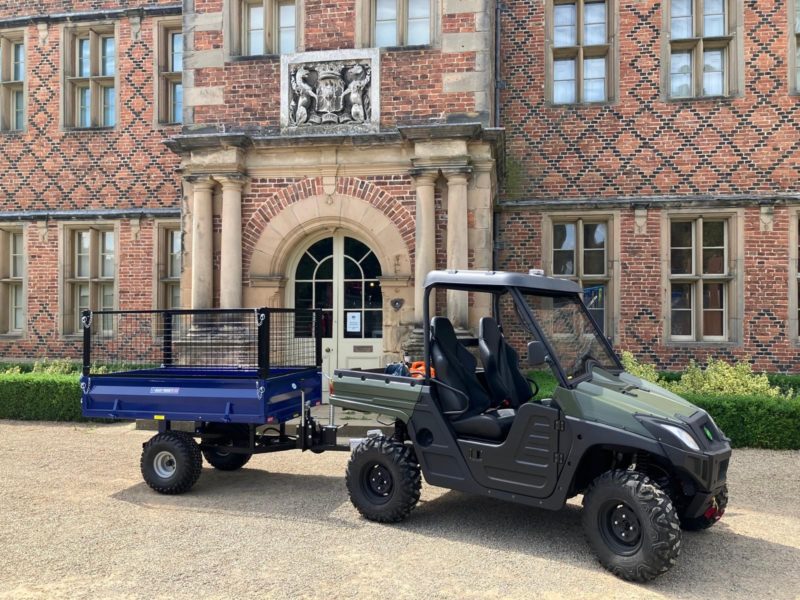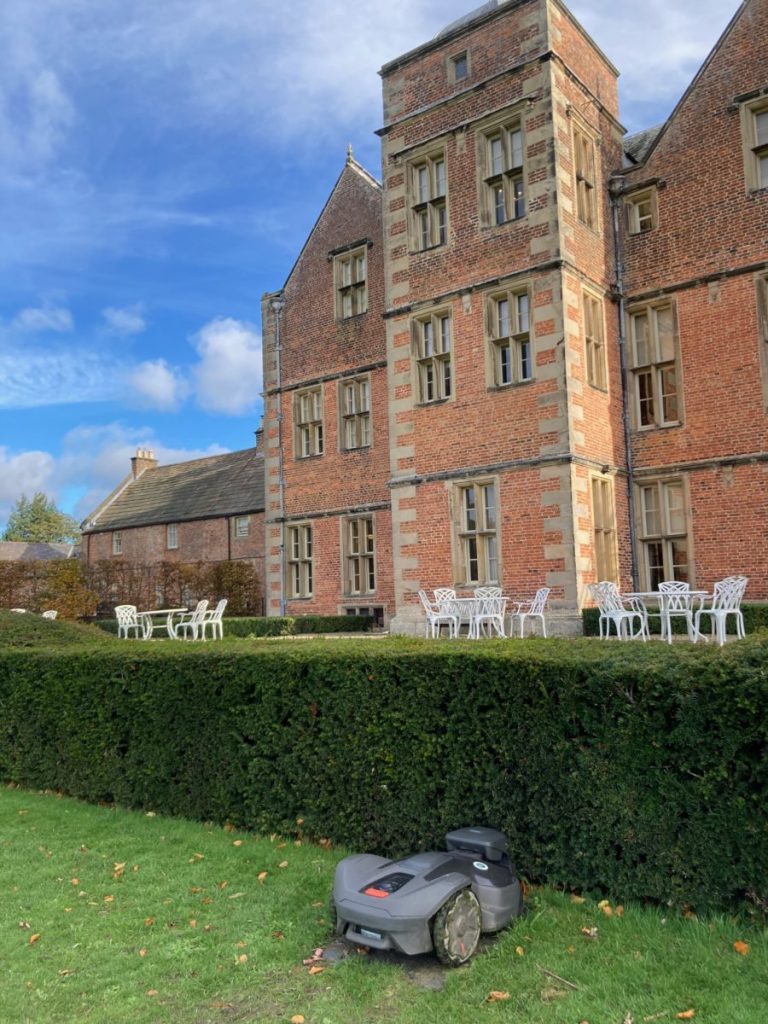Kiplin Hall

Key Achievements
- Saved £4,000-£5,000 annually in staffing time
- Undertaking plans to shift entirely to electric operations
Kiplin Hall, a historic house and museum in rural North Yorkshire, has long balanced the care of its 17th-century estate with the realities of modern sustainability.
Today, a small robotic mower hums quietly across the lawns where staff once spent hours cutting the grass themselves. What began as a simple equipment upgrade has entirely reshaped how this 400-year-old heritage site manages its grounds – a reminder, says Director James Etherington, that “it doesn’t have to be expensive to be green”.
Investment for the future
Built in the 1620s by George Calvert, founder of the state of Maryland, Kiplin Hall has been run as a charitable trust since 1971. The 90-acre site attracts thousands of visitors annually, and, like many heritage properties, faces the challenge of maintaining historic landscapes while remaining financially and environmentally sustainable.
Kiplin Hall had been relying on diesel powered equipment to maintain its grounds, but this was becoming costly, time consuming and increasingly out of step with the charity’s environmental ambitions. At the same time, growing visitor numbers were putting pressure on their facilities and operations, prompting the team to look for ways to expand their capacity and improve visitor experience.
A journey of resilience and adaptation
With support from the Thrive Together Fund delivered by Social Investment Business (SIB), they were able to restore a building on their site to create a more welcoming and accessible visitor centre. Etherington says it was a large operation for a small charity, but one that’s worked: “The café is taking twice as much money, the shop’s taking four times as much money and the visitors are having a much better experience all together”.
The success gave the team the confidence to take their next step, moving towards more energy efficient management of the site. The Energy Resilience Fund provided an opportunity to make these changes and enabled Kiplin Hall to replace its diesel tractor with two small electric utility vehicles and introduce a robotic mower to maintain its largest lawn.

Impact
The results have been immediate and wide-ranging. The robotic mower alone saves around £4,000-£5,000 each year in staffing time, keeping the grounds immaculate for visitors while freeing gardeners to focus on horticultural work. “I think my head gardener fell in love with it” says Etherington. The electric vehicles have improved flexibility for staff and volunteers and removed the need to transport and store fuel on site.
“This is part of our longer-term goal to move away from fossil fuels entirely”, says Etherington. “We’ve always striven to improve our environmental impact as well as our financial impact”.
The project has also strengthened confidence within the organisation by showing that investment in sustainability can deliver practical, financial, and environmental returns. Etherington highlights the Fund’s blend of grant alongside loan, and accessible process, as key to their success: “It has really enabled us to do stuff that we wouldn’t have managed to do otherwise”.
Kiplin Hall’s experience shows how well-timed investments can make a lasting difference. From improving visitor facilities to transforming everyday operations, the charity has demonstrated that financial resilience and environmental sustainability can go hand in hand. For other heritage organisations, it offers a real example that sustainable change often begins with a single step, and “doing right by the environment can also do right by the business”.
The Energy Resilience Fund (ERF) provides a blended funding package of loan (60%) and grant (40%) to bolster the energy resilience of eligible charities and social enterprises in England. The Fund is delivered by a partnership made up of Social Investment Business, Big Issue Invest, Charity Bank, Co-operative and Community Finance, Groundwork UK, Key Fund, Resonance Ltd, The Architectural Heritage Fund, and The Ubele Initiative.
